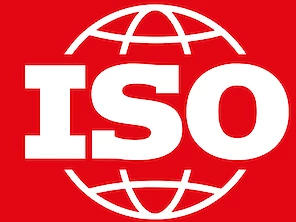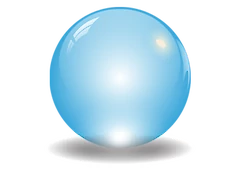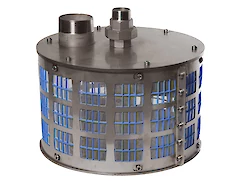What makes the Acniti Ozone Waste Water Sensor unique?
The Ozone Wastewater Sensor of Acniti utilizes a proven electrochemical measurement principle, in which dissolved ozone diffuses through a polymeric membrane and reacts within an electrolyte layer. This reaction generates an electric current that is directly proportional to the ozone concentration. Thanks to the use of three electrodes (working, counter, and reference), the measurement remains stable, and the sensor is less susceptible to aging or contamination.
Applications
Key Benefits
Easy Installation
The sensor comes with a mounting board and all necessary accessories. The flow cell is pre-installed, and smart connectors make the sensor quick and easy to set up. For calibration of the unit CX100, a calibration kit is required.
Measuring Principle
The ELP-200 dissolved ozone sensor is an electrochemical sensor that uses a "membrane ozone monitor" based on the polarographic measurement principle. As an electrochemical device, it operates by facilitating a chemical reaction (specifically, reduction or oxidation) of ozone at an electrode, which produces an electrical current proportional to the ozone concentration. The inclusion of a membrane allows only ozone to pass through and reach the electrode, enhancing selectivity and reducing interference. In this context, "polarographic" refers to a type of amperometric electrochemical measurement in which the sensor detects ozone by measuring the current generated during the redox reaction at the electrode surface, thereby translating chemical information into a quantifiable electrical signal.
Ozone penetrates a membrane
– Ozone (O₃) present in the water diffuses through a special polymer membrane to the inside of the sensor.
Ozone reaches the electrolyte layer
– Between the working and counter electrodes, there is a thin layer of electrolyte. The ozone dissolves here as it passes through the membrane.
Electrochemical reaction
– At the surface of the working electrode, the ozone reacts:
In acidic conditions:
O₃ + 2H⁺ + 2e⁻ → O₂ + H₂O
In basic conditions:
O₃ + H₂O + 2e⁻ → O₂ + 2OH⁻
– Simultaneously, an oxidation reaction takes place at the counter electrode, releasing electrons.
Current intensity = ozone concentration
– The amount of electrical current generated is directly proportional to the amount of ozone in the water. This is known as the limiting current region – a voltage range where the measured current remains constant despite increasing voltage.
Stable and linear measurement
– Thanks to the stable design with three electrodes (working, counter, and reference electrodes), the measurement remains reliable over a long period, with minimal sensor contamination.
In short, the Ozone Waste Water Sensor converts ozone in water into an electrical signal that precisely indicates the amount of ozone present. Reliable, linear, and accurate, exactly what you want in a critical measurement application.
Important Specifications
| Feature | Specification |
|---|---|
| Model | ELP-200 |
| Measurement Principle | Electrochemical via a gas-permeable membrane |
| Measurement Range | 0–10 mg/L dissolved ozone |
| Accuracy | ±2.5% of full scale |
| Response Time | 90% response within 60 seconds |
| Temperature Range | Water: 5–30°C; Ambient: 5–40°C |
| Power Supply | 100 - 220 V AC, 50/60 Hz (~5 VA) |
| Connections | Stainless steel fittings for water inlet and outlet |
| Dimensions | 125 x 81 x 560 mm |
| Calibration | CX100 is required |








